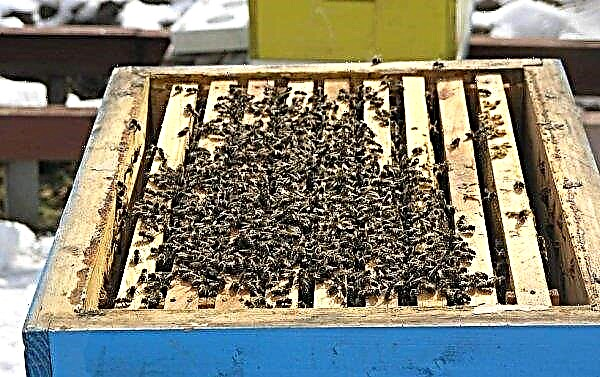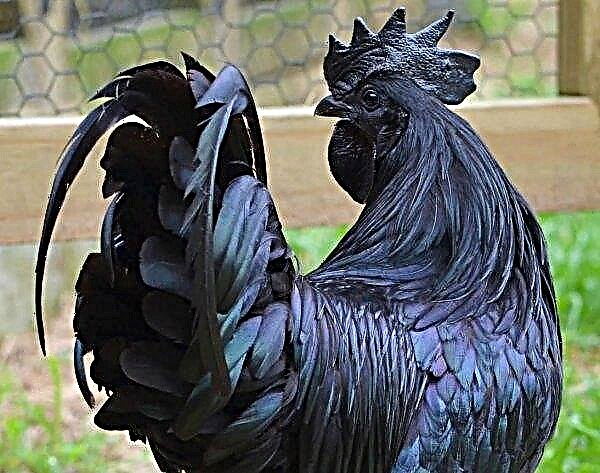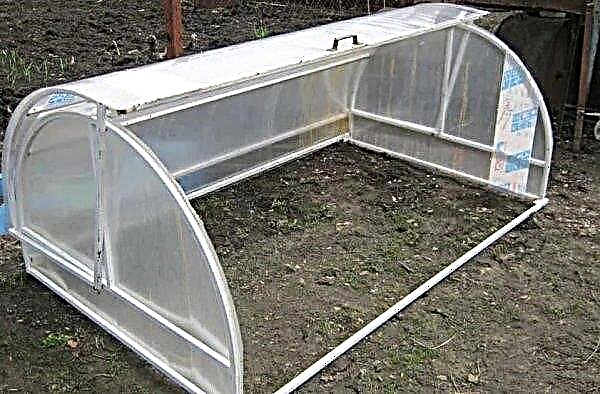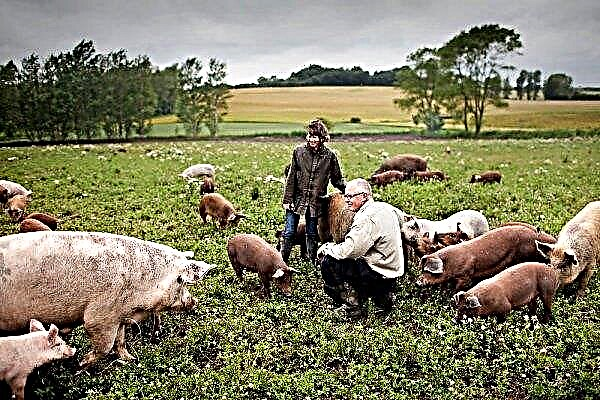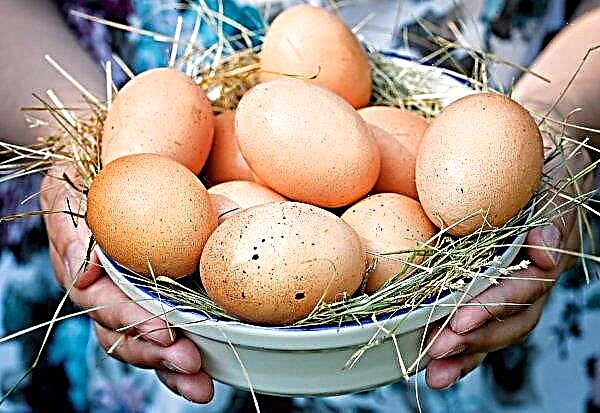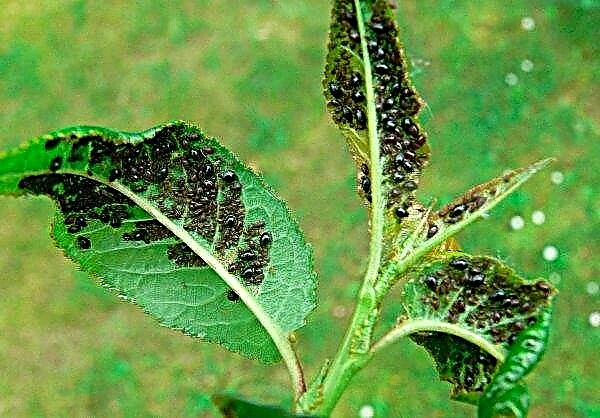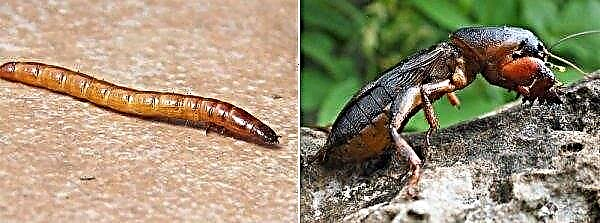One of the promising new potato varieties that have successfully passed field trials is the medium early high-yielding variety Belmondo (Belmonda, Belmonda). About him in more detail - later in the article.
History of the variety
Breeding work was carried out in Germany by the Solagro Seed Alliance. When cultivated in different countries of Europe, excellent results were achieved, which makes it possible to grow varieties in almost any climate and soil. On the territory of the Russian Federation, Belmondo is successfully growing both in the Central zone, and in the Urals and in the Krasnodar Territory, and the most fruitful are the landings in the Tula and Vladimir regions.
Description and characteristic
Potatoes Belmondo easily and quickly adapts to various conditions without loss of quality of root crops. Tubers grow on the bushes quickly, amicably and evenly. The growing season of the variety from planting to harvesting is 70–80 days.
Did you know? Unique varieties of potatoes with intensely colored pulp were recently bred in Holland: purple Purple Rain and pink Lily Rose.
Appearance and productivity
Large and sprawling bushes of Belmondo grow up to 60 cm in height. Cirrus leaves are dark green, wrinkled, with a slight undulation. Inflorescence with dark red or light purple flowers.
Inflorescence with dark red or light purple flowers.
Each bush gives 12-16 pcs. rounded oval tubers weighing 100-120 g. The skin color is yellow, the surface is smooth. Root crops are uniform in size, the number of too large and very small is small. The eyes are shallow and are located close to the surface of the potato, which greatly facilitates the processing. Productivity is up to 80 tons per hectare, depending on growing conditions.
Taste qualities
Taste is high, in the stages of technical and conditional ripeness with various cooking methods, the tasting score is more than 8 points. Potatoes are among the most attractive varieties with yellow flesh.
Potatoes are among the most attractive varieties with yellow flesh.
Due to the low starch content (14–16%), the flesh does not darken during heat treatment. A variety of tableware. Root crops do not boil for a long time and are well suited for cooking whole in their skins, for soups and salads, frying and baking, ideal for cooking french fries.
Grade stability
Belmondo has strong immunity and high resistance to late blight, rhizoctonia, black mold and rust. Medium stability in the variety to scab and black spotting, weak - to the Y virus and leaf curl. Chemical attacks are required against attacks by the Colorado potato beetle. Low drought tolerance, in dry periods, crops require watering.
Did you know? Potato was one of the first two plants experimentally grown on the moon in a greenhouse aboard the Chinese probe Chang'e-4.
Advantages and disadvantages of the variety
- The benefits of Belmondo potatoes include:
- high productivity;
- disease resistance;
- excellent adaptability to various conditions;
- uniform in size root crops;
- high taste;
- lack of darkening during heat treatment;
- resistance to repeated germination.
- The disadvantages of the variety are:
- poor resistance to the virus Y;
- poor tolerance of drought.
| Grade | Productivity, t / ha | The weight of the root crop, g | The number of tubers on the bush, pcs. | The starch content,% |
| Belmondo | 70–80 | 100–120 | 12–16 | 14–16 |
| Nevsky | 50–60 | 90–130 | 8–15 | 10–14 |
| Elizabeth | 30–40 | 80–140 | 9–10 | 13–14 |
| Ryabushka | 30–40 | 90–130 | 12–15 | 11–18 |
| Laura | 33–50 | 90–150 | 15–20 | 15–17 |
| Odysseus | 18–24 | 90–120 | 7–11 | 13–17 |
| Adretta | 35–45 | 120–150 | 15–25 | 13–18 |
| Romano | 11–34 | 70–90 | 8–9 | 14–17 |
| Luck | 40–45 | 100–150 | 10–15 | 12–14 |
Features of outdoor cultivation and care
Belmondo cultivation is carried out according to standard agrotechnical rules. A suitable well-lit area with loose fertile soil is prepared in the fall. Plant residues are removed, the soil is dug up and fertilized with potash and phosphorus. Planting material a month before planting is sorted and taken out for germination in a warm room with diffused light.
Important! Optimum Belmondo tubers for planting must be at least 60–80 g
Optimal terms and conditions for landing
Landing is carried out in April-May, after waiting for the soil to warm up to a depth of about 10 cm to +5 ... + 8 ° C. Dig the soil, loosening deeper, - the roots Belmondo loves deepening. Landing is carried out in dry cloudy weather. Sprouted tubers should have strong sprouts no more than 1 cm long by this time.
Sprouted tubers should have strong sprouts no more than 1 cm long by this time.
Preparation and landing pattern
The holes are dug at a distance of 25-30 cm with a row spacing of 50-60 cm. It is advisable to add 1 handful of ash and 1 liter of dry humus to each hole. The depth of root crops planting is 6–10 cm.
The depth of root crops planting is 6–10 cm.
After planting, the surface of the soil should be leveled and loosened, large clods of earth broken. If there is a possibility of frost, the plantings are covered with agrofibre or film.
Frequency of irrigation and fertilization
When the bushes reach a height of 10-15 cm, regular weekly watering starts at the rate of 4-5 l of water for each plant. In the phase of budding and flowering, the frequency is increased to 2-3 times a week and gradually increase the flow of water to 10 liters per bush. When rainy weather and cold weather occur, watering is not carried out.
Fertilize potatoes during the formation and intensive growth of tubers, which occurs during flowering. The best result is given by foliar top dressing with macro- and microelements. Superphosphate, ammonium nitrate, and potassium sulfate are used in 1–5% solutions, and copper sulfate or boric acid in 0.01–0.02% solutions.
Did you know? A hybrid of potato and tomato named TomTato, became the “Vegetable of the Year” in 2018 in Austria. Tubers form on the roots of the plant, and cherry tomatoes ripen on the tops.
Hilling and weed control
After emergence, the soil is regularly loosened, preventing the formation of a dry crust on the surface. The greatest efficiency gives loosening after watering or rains. At the same time weeds are weeding, preventing their growth. When the bushes reach a height of 15–20 cm, wetting is carried out on wet soil. You should not be late with the event, otherwise the probability of damage to the stolons on which the tubers are formed will increase.
Pest and Disease Control
Due to its high resistance to infections, Belmondo potatoes practically do not get sick. If nevertheless there are signs of damage, for example, fusarium infection, the plantings are sprayed with Fitosporin, Fundazol or copper-containing preparations. When a Colorado potato beetle appears, plantings are treated with Prestige, Aktara, or other insecticides.
For the prevention of diseases, it is necessary to observe crop rotation, prevent proximity to other nightshade crops and provide potatoes with timely watering and top dressing.
Harvesting and storage
In June-July, after flowering, the potatoes are ready for harvest. High palatability allows you to collect tubers upon reaching both technical and conditional ripeness.
If during wet weather the potato tops continue to turn green, do not turn yellow and do not dry out, it should be mowed a week and a half before harvesting. It is not necessary to postpone the collection of root crops, since this will adversely affect their keeping quality.Important! In the stage of conditional ripeness, when the peel is thin and peeling, it is not recommended to collect root crops for long-term storage.
 Tubers are stored in dark rooms with an air temperature of +1 ... + 4 ° C and a humidity of 80–85%.
Tubers are stored in dark rooms with an air temperature of +1 ... + 4 ° C and a humidity of 80–85%.The excellent characteristics of the variety and its unique adaptability make Belmondo potatoes particularly promising for varietal renewal to increase yield and taste.


